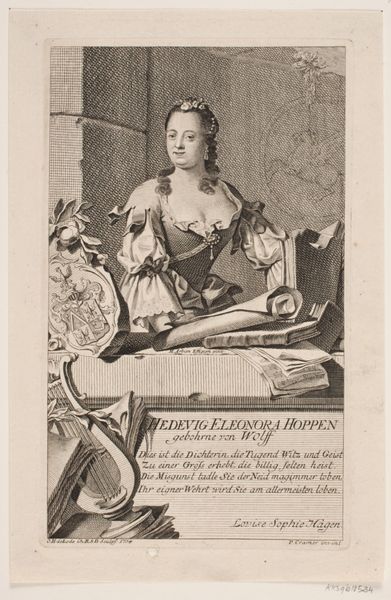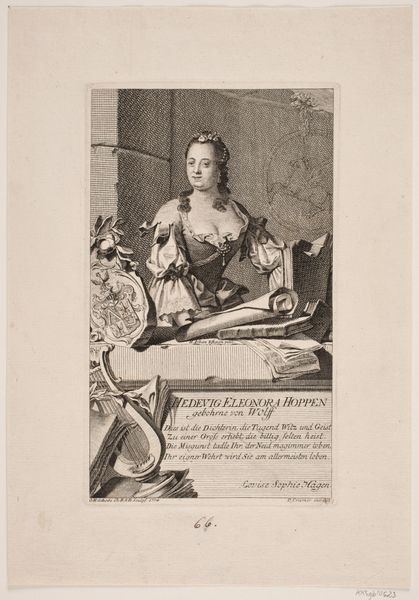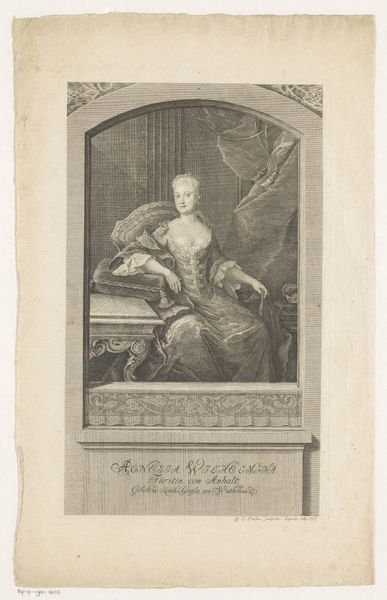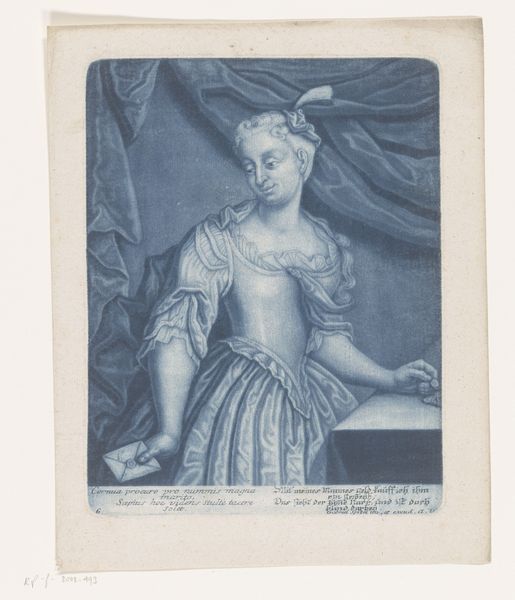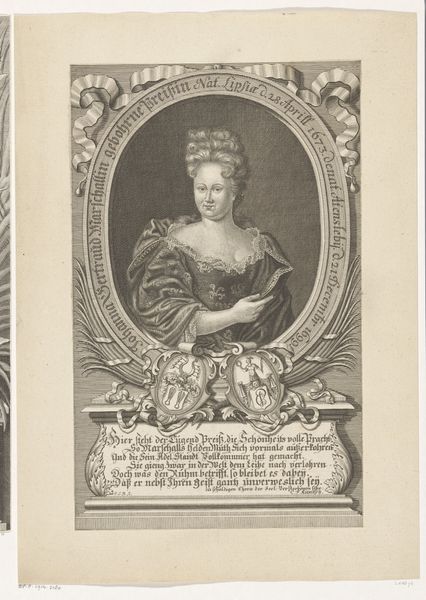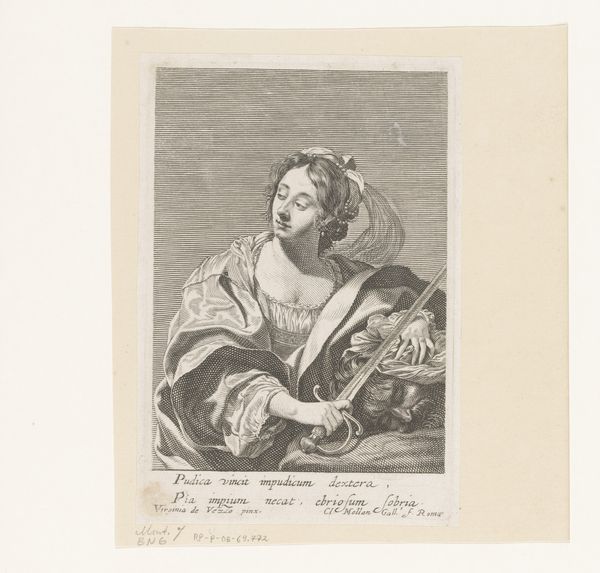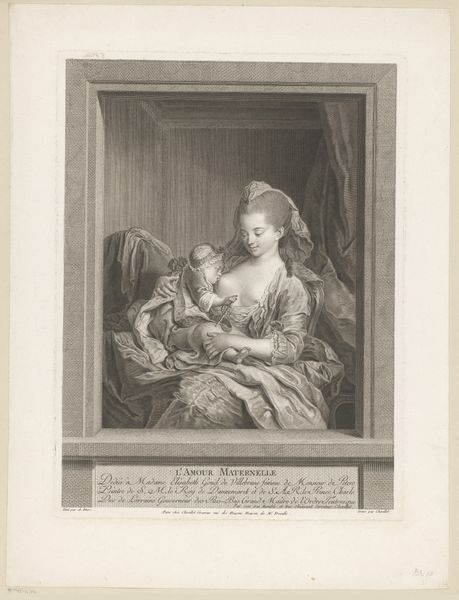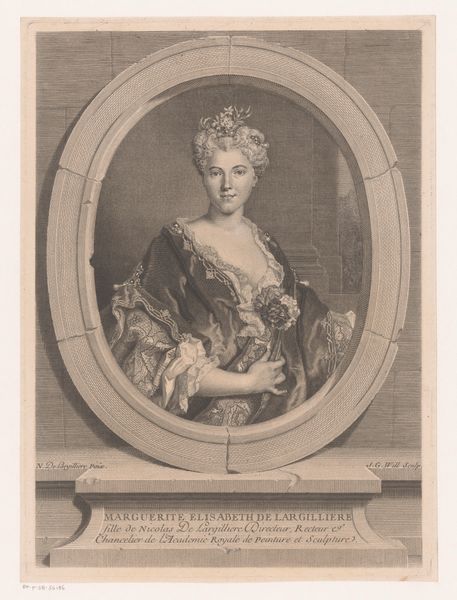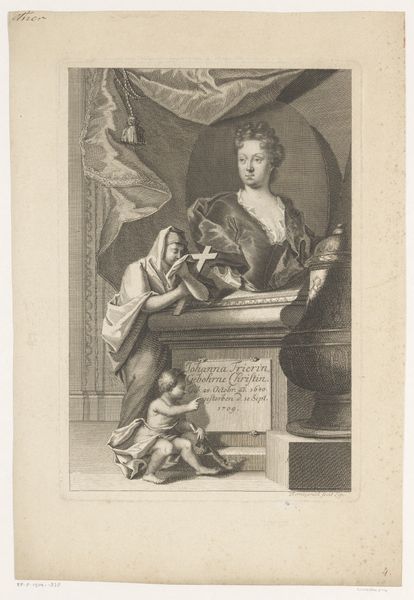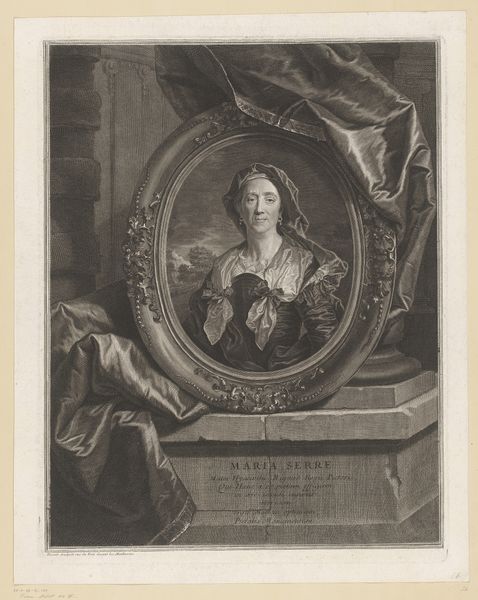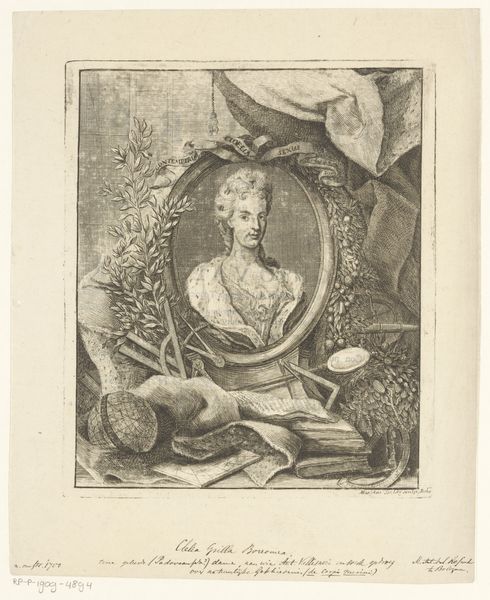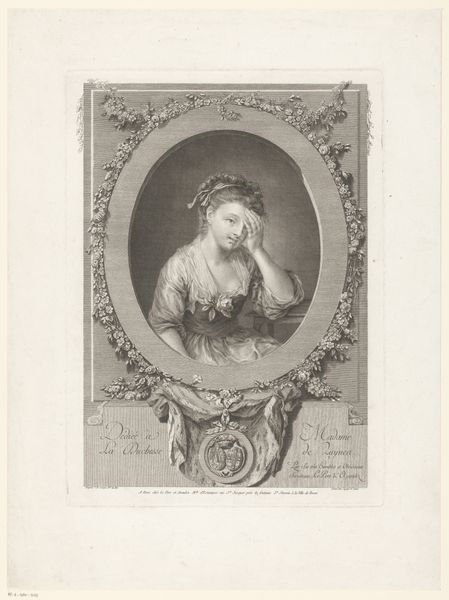
print, engraving
#
portrait
#
aged paper
#
baroque
# print
#
traditional media
#
caricature
#
vignette lighting
#
engraving
Dimensions: height 177 mm, width 104 mm
Copyright: Rijks Museum: Open Domain
Curator: We're looking at a striking engraving here at the Rijksmuseum, dating from 1754. It's entitled "Portret van Hedwig Eleonora Hoppe" by Odoard Helmont von Lode. The baroque print portrays a woman surrounded by books. What's your initial reaction? Editor: My first thought is, it's rather stiff, isn’t it? Formal, posed. Almost feels like a caricature. And given that it is a print, there must be a plate to consider, an etching, a set of labor practices, as opposed to, say, a spontaneously splashed paint. The line work seems deliberate but almost rote. Curator: I see what you mean. Perhaps not a spontaneous outburst, but rather a carefully crafted image meant to convey status and intellect. Look at the objects that frame her, it's all about her achievements. Editor: Achievements conveyed by commodities... printed portraits were relatively accessible by the mid-18th century; How would having her portrait circulated have been perceived by Hedwig herself? By society? How many copies? By whose hand was each made? Each one feels almost infinitely distant. The line is so, so clean, so smooth, it belies the hours of work and the skill embedded. Curator: It's interesting to consider that level of production. For me, the print itself, beyond being simply black lines, becomes alive when thinking about Hoppe. She must've sat for someone—what was her mood, her expectations? What was his view of her? The pose is idealized, certainly. Editor: I suppose so. But that “ideal” is inextricably bound up in tools, the stylus against copper, acid eating away, paper, ink… and Hoppe herself. She's part of this system, just as we, observing her, have now become enmeshed in this endless cycle of consumption and reproduction. The materiality dictates the way we remember her. It’s somber, in some senses, thinking about labor immortalizing people like this, so precisely! Curator: Right, so seeing all of these processes intertwined brings a certain energy to the otherwise formal piece. Thinking about Hoppe’s lived experiences combined with all this production, one hopes her 'cloner Wehrt' is, in fact, still much esteemed. Editor: Agreed. It allows us to appreciate not only the aesthetic, but the social implications of reproducing an image of someone—especially, when so many hands have been busy producing, printing and selling something like this piece.
Comments
No comments
Be the first to comment and join the conversation on the ultimate creative platform.
